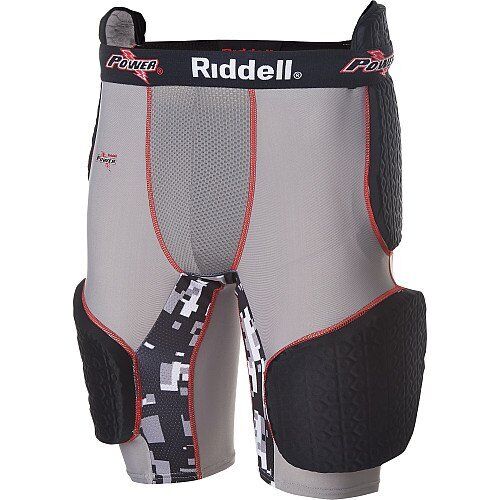Introduction:
Football players have a variety of equipment at their disposal to protect themselves on the field. One such piece of equipment is the football girdle. These padded undergarments are designed to offer support and protection to players during gameplay. However, like any other piece of equipment, girdles have their pros and cons. In this blog post, we will explore the benefits and drawbacks of wearing a girdle in football, helping you make an informed decision about whether it is the right choice for you.

Pros of Wearing a Girdle:
a) Protection: The primary benefit of wearing a girdle in football is the added protection it offers. Girdles feature strategically placed padding that protects vulnerable areas such as the hips, thighs, and tailbone. This padding helps to absorb and distribute the force of impacts, reducing the risk of injuries such as bruises, contusions, and fractures.
b) Comfort: Another advantage of girdles is that they are designed to fit snugly against the body, providing added support and comfort. The compression fit of girdles helps to improve circulation, reduce muscle fatigue, and prevent chafing or rubbing against the skin.
c) Flexibility: While girdles offer protection, they do not compromise on flexibility. Girdles are designed to conform to the body’s contours, allowing for a full range of motion and optimal flexibility. This flexibility enables players to perform at their best, execute plays, and move swiftly on the field.
d) Moisture Management: Many girdles are constructed from moisture-wicking materials that quickly pull sweat away from the skin, keeping players dry and comfortable during gameplay. This feature helps to prevent skin irritation and can improve overall comfort and performance.
Cons of Wearing a Girdle:
a) Cost: One potential drawback of girdles is their cost. Depending on the brand and features, girdles can be expensive. This cost may be a factor for players who are on a budget or who need to purchase multiple girdles.
b) Heat Retention: While girdles offer benefits such as padding and compression, they can also trap heat, leading to discomfort and overheating during gameplay. This issue can be mitigated by choosing girdles with breathable materials or by wearing additional cooling gear.
c) Sizing: Finding the right size girdle can be a challenge, especially for players who are new to the sport. A poorly fitting girdle can compromise protection and comfort, leading to potential injuries or discomfort during gameplay.
d) Maintenance: Girdles require proper maintenance to ensure they remain effective and functional. This includes cleaning and storing them properly after use. Failure to follow proper maintenance procedures can lead to wear and tear, affecting the girdle’s protective capabilities and longevity.
Wearing a girdle in football offers various benefits but also presents certain drawbacks. Consider the pros, such as added protection, comfort, flexibility, and moisture management, as well as the cons, including cost, potential heat retention, sizing challenges, and maintenance requirements. Weigh these factors alongside situational considerations, such as your position and playing style, as well as weather conditions. Ultimately, personal preference should guide your decision. Try out different options, consult with experienced players, and make an informed choice that aligns with your needs, comfort, and performance goals. Remember, the goal is to strike a balance between protection, comfort, and optimal performance on the football field.
Conclusion:
Wearing a girdle in football has both pros and cons. The added protection, comfort, flexibility, and moisture management make girdles an attractive choice for many players. However, the cost, heat retention, sizing, and maintenance issues may be a drawback for some. It is important to weigh these factors carefully and consider your personal preferences and needs when deciding whether to wear a girdle. Ultimately, the best way to determine if a girdle is right for you is to try it out during gameplay and assess its effectiveness in real-world conditions.